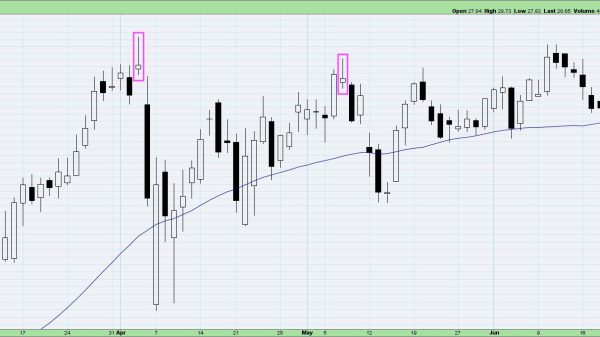What tech skills companies recruited for in Q1 2024? AI, Gen AI, and 5G
IoT Analytics today released the results of their latest report titled: “State of Tech Employment”.
The report analyzes over one million U.S. job postings to determine which tech expertise and skills are in demand and assess the hiring intensity of 450+ companies across various sectors. The findings from Q1 2024 show that 1. AI-related job postings are on the rise, 2. 5G- and WiFi-related job postings are up, while most other connectivity technologies decline, and 3. Cloud-related job postings have notably fallen.
Key insights
Tech job openings decreased 2% in Q1 2024 in the US and are now down 47% since their peak in April 2022, according to the inaugural State of Tech Employment Spring 2024 report. AI-related job postings increased in Q1 2024, driven by strong demand for generative AI expertise. The number of 5G-related job postings also increased, while demand for cloud-related expertise declined QoQ. Hiring density in the industrial automation industry currently tops other industries, with the telecommunications industry at the tail end.Key quotes
Knud Lasse Lueth, CEO at IoT Analytics, remarks: “Our new State of Tech Employment Spring 2024 report highlights a pivotal shift towards AI and expertise in the tech industry. Despite a 47% downturn in overall US tech job openings since April 2022, we’re witnessing a surge in demand for generative AI skills. February also marked the first month of increase in total job openings after seven quarters of decline. AI hiring is widespread, but AI providers such as OpenAI, Nvidia, and Anthropic are clearly leading the pack—each firm is currently at the forefront of the hiring intensity ranking.”
Philipp Wegner, Principal Analyst at IoT Analytics, adds:
“The jump of AI-related job postings in Q1 2024 indicates that companies have realized that the talk of AI needs people that actually work on AI projects.”
The big picture: US tech role openings are down overall, but AI roles are up
The number of tech job postings decreased by 2% in Q1 2024 compared to Q4 2023, according to IoT Analytics’ inaugural 85-page State of Tech Employment Spring 2024 report. With that, Q1 marks the 7th consecutive quarter of overall declines in tech job openings in the US. Total job openings are now down 47% since their post-COVID peak in April 2022. For comparison, the US Bureau of Labor Statistics reports a 27% drop in overall monthly job openings over the same period, showing that the tech industry has certainly taken a hit in the recent economic slowdown.
However, on the bright side, February 2024 saw the first month-to-month growth in tech job openings since the start of the slump, at 3% compared to January 2024. Helping to steer this upward trendline was a significant climb in AI and AI-related fields, which will be discussed further below.
The State of Tech Employment report analyzes over one million U.S. job postings to determine which tech expertise and skills are in demand and assess the hiring intensity of 450+ companies across various sectors. Below are three key findings from the report that reflect the state of tech employment going into Q2 2024.
Key finding 1: AI-related job postings are on the rise
As a whole, job postings seeking expertise in AI and AI-related fields are up 4% QoQ, with AI itself climbing 8% QoQ. Most impressively, job postings seeking Generative AI (GenAI) expertise were up 38% QoQ in Q1 2024, and this steep climb helped propel the 3% bump in tech job openings in February 2023.
For recent historical context, AI-related job postings have followed a similar path as other tech job postings, peaking around April 2022 and declining significantly since then. However, in January 2023—shortly after the public release of OpenAI’s ChatGPT—the rate of decline in AI-related job openings began to steady while other fields continued declining. By July 2023, the number of AI-related job postings began to rise, increasing 18% through February 2023.
This upward trend in AI-related job postings correlates with corporate executives’ rising interest in AI. Compared to Q4 2022, the number of quarterly earnings calls mentioning AI in Q1 2024 has risen 19 percentage points, from 13% of calls to 32% of calls.
Executives are concerned about a labor shortage and skill gap in this area, thus creating the need to upskill existing or future workforces. Companies appear worried about losing existing AI talent, exemplified by Google’s co-founder Sergey Brin personally calling an employee to convince them not to move to OpenAI. Other executives (e.g., from Cognizant and Accenture) highlight the need to develop the skills in-house.
Key executive quotes on upskilling for AI
“In 2023, 90% of our global workforce spent time in learning with 270,000 of our employees acquiring at least one new skill proficiency. And 88,000 completing AI and generative AI courses.” – Ravi Kumar, CEO, Cognizant, February 06, 2024 “Invest more in the people than in the technology. […] There is no AI-ready workforce you can hire a year from now, or two years from now, or three years from now. You need to bring your workforce with you and develop them.” – Paul Daugherty, CTO, Accenture, 12 December 2023A closer look at AI-related job postings shows that Python skills are very important for AI roles—52% of all AI-related job postings mention it, much more than other programming languages such as C++ (12%) or R (8%). Expertise related to TensorFlow (14%) and Pytorch (11%), both machine learning libraries, also play an important role. There is also a significant demand for cloud-related skills in AI job postings, with Azure (15%) topping AWS (10%) in terms of the skills mentioned.
The increasing demand for AI-related skills and expertise naturally influences the salary for skilled workers with desired skills. The platform Comprehensive.io indicates that the median salary of skilled employees in AI jobs is now $172,000 per year, 17% higher than that of a software engineer with a similar level of experience.
Key finding 2: 5G- and WiFi-related job postings are up, while most other connectivity technologies decline
Job postings seeking 5G expertise rose 13% QoQ in Q1 2024, the highest climb of connectivity-related job postings. This aligns with what IoT Analytics observed at the Mobile World Congress 2024 in Barcelona, Spain, where advancements in 5G technology to enhance quality and performance and enable private 5G connectivity were on full display.
WiFi-related job postings also rose in Q1 2024, though these only grew 2% QoQ. Meanwhile, in Q1 2024, job postings seeking 4G, cellular, Bluetooth, and LoRa expertise declined 3%, 6%, 9%, and 15% QoQ, respectively.
Key finding 3: Cloud-related job postings have notably fallen
According to the State of Tech Employment report, cloud-related job openings were down 3% QoQ in Q1 2024. Though this tech field has the highest number of job postings in absolute terms, the declining number of job postings is part of a continued downward trend since the peak of cloud-related job postings in April 2022. As discussed in the recent State of IoT Spring 2024, cloud revenue growth has reduced significantly in 2023 as cost optimization took center stage in many companies. That also impacted the cloud-related job postings. The job postings largely include companies that build products or services in the cloud and seek expertise in utilizing certain hyperscalers. Job postings that mentioned AWS dropped by 2% QoQ, Azure (-2% QoQ), and Google Cloud (-4% QoQ).
Other notable findings from the State of Tech Employment report
The State of Tech Employment covers more than just the changes in expertise and skills related to tech-related job postings. It also delves into the hiring intensity—the number of openings publicly displayed per 100 current employees—and layoff data of specific companies or industries.
Hiring intensity
Out of 7 tracked industries in the report (including the catchall “Other”), the industrial automation industry had the highest median hiring density in Q1 2024 at 3.1 open positions per 100 current employees. By comparison, the median hiring density across all industries tracked was 2.4.
Four industrial automation companies stood out in terms of hiring density:
Johnson Controls International plc had a hiring intensity of 6.2 Siemens had a hiring intensity of 4.8 Schneider Electric had a hiring intensity of 4.4 ABB Ltd. had a hiring intensity of 4.3Companies in the telecommunications industry had the lowest median hiring intensity, with only 1 open position per 100 employees in Q1 2024. Some examples include:
AT&T had a hiring intensity of 1.05. Verizon had a hiring intensity of 0.83. Orange had a hiring intensity of 0.26.Layoffs
Some tech companies continue to lay off staff, although at a much smaller scale than a year ago. In Q4 2023, approximately 24,000 tech-related layoffs were registered, compared to 167,000 in Q1 2023—a stark decline. The areas with the highest cuts were:
HR – Our tracker shows that US-based cloud computing and virtualization technology company VMware cut 44% of its HR personnel in 2023. Marketing – Our tracker shows that US-based software company Informatica, for example, cut 16% of its marketing team in 2023. Support – US-based technology giant Microsoft, for example, cut its support staff by 18% in 2023, according to our data.The post What tech skills companies recruited for in Q1 2024? appeared first on IoT Business News.
























